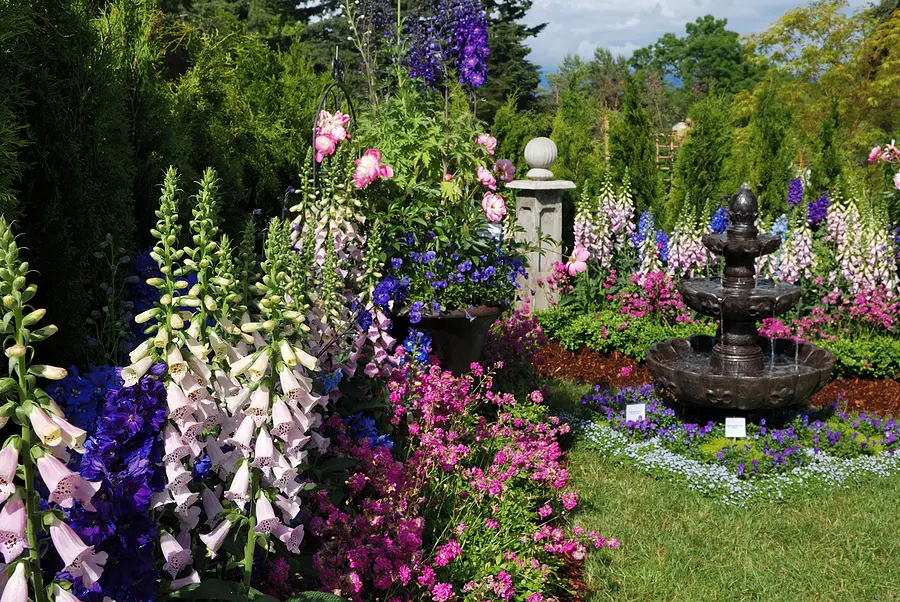Is it OK to Plant Perennials in the Fall?

Find out about simple gardening such as how to plant perennials in fall and understand why this is the best season for gardening.
Planting Perennials in Fall
Why should spring have all the fun? You may not think of fall as a time for planting perennials, but in fact it offers a golden opportunity to do so. It not only is sale time for many perennials at local garden centers, but also the growing conditions are ideal for getting roots established.
Start Planning Early
Autumn is when the garden is most freshly in your head anyway, so you still remember where it could use a bit more pizzazz. You know, that dead spot you identified in midsummer? Or the garden bed that needs a some yellow here or there? It’s time to confront that.
Annuals vs. perennials — what’s the difference?
Time It Right
In Zones 6 and 7, the cool-down begins around the end of September, when there are still about six weeks before the first fall frost. Now is the tine to begin with your fall plants. If you can, plant earlier in Zones 3 to 5.
And of course, for Zones 8 to 11 you can pretty much plant all year without issue. (Lucky!) That said, an early start is always best to allow roots time to establish themselves. Find out about how plant zones function and discover yours.
Don’t make these gardening mistakes with perennial plants.
At the end of the season, you may also find significant markdowns on plants that are past their prime. Most vendors are quick to lower the price when their perennials stop blooming and drop it even further once their plants begin looking downtrodden. Look to see perennials at 50 percent off or even 75 percent off. Remember: The longer you wait for deals, the smaller the selection and less time you have to get plants settled in.
Here’s how to safely transplant perennials.
Rescue Perennial Plants
You know that part of the bargain area that’s really cheap, and is pretty obviously so? It’s the bargain bin, and it’s from there that you might be able to make out with a steal of a prospect. The plants are frequently wretched looking, sometimes more dead than alive, but a few are worth trying. If it’s ramrod stiff, in general, it looks sad or has yellowing leaves or dying foliage, but for the right price, grab away — as long as there’s still a little green and no disease. Follow these 5 tips for selecting healthy plants at the nursery.
Frost is terrible, right? True, the tops of your new plants will be killed, but the root growth will not. Roots will continue to grow until the soil is as solidly frozen as you’d expect it to be, usually weeks if not months after that first frost. In most temperate areas, that is all but the far North and high mountains, soil doesn’t generally freeze until after Thanksgiving.
Grow Healthy Roots
The soil is cold in spring, not so friendly to the roots of newly planted perennials. The soil is warm in fall and roots grow fast.
Miracle-Gro includes these in its Mix with a product called Moisture Control Also, because the plants won’t produce flowers, they will have extra energy to send more of their root system out into the soil from their new home.
Plant fresh perennials, tend to the soil and water well. By the time growing season comes around again, they’ll be in happy residence.
When you bring your bargain plants home for a quenching drink of water. Toss them in a tray or saucer to collect the water that runs through and give them some time to soak it up. Then take the next step as though they were the healthiest plants on earth. As temperatures drop, days shorten and the soil holds on to less direct sunlight, plants require less water, unless it is raining infrequently.
In that case, give them a good drink weekly until the ground freezes. So those roots are still growing down there.
Wait until the ground freezes hard, then add a couple of inches of mulch around your perennials — not to keep it from freezing (that’s just absurd) but to help it stay frozen. Roots not firmly anchored can be “frost heaved” out of the soil with each freeze and thaw, putting the plant at risk for being killed by cold.
Once the mulch is down, you’re good to go. Even if one or two of your new perennials fail to survive, you’re most likely still ahead. Planting in the fall allows you to get a big head start on spring gardening, and more time during the busy season.
